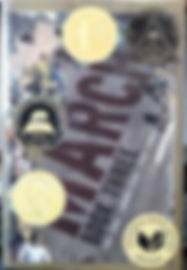The Practical EnglishTeacher is a participant in the Amazon Services LLC Associates Program, an affiliate advertising program designed to provide a means for sites to earn advertising fees by advertising and linking to amazon.com.
Like most American students, I learned about the Civil Rights Movement when I was little and thought that was that. But as students, administrators, peers, and society pushed me to learn more about racism, I realized that not much has changed over time. The more I read and watched, the more I came across quotes from 50, 100, 200 years ago that still applied today....which made me feel sick and like a dummy.
For this unit, I wanted students to come to this conclusion themselves, so I tried to pair older texts with newer texts. The first iteration of the unit started with only Black authors and classic Civil Rights Movements texts until I realized that women, Native Americans, LGBTQ+ citizens and others are also still fighting their same fight over and over again. Once I realized that, I tried to expand the unit to include them as well.
I never quite got this unit the way I wanted to before I switched to IB, so below is just a general guide/ list of materials that might be helpful to you if you are creating a similar unit.
Way below are the books and documentaries that have helped me to understand racism but not necessarily texts that I have used in the classroom.
Civil Rights Then & Now
A good place to start this unit is with an analysis & discussion of the Declaration of Independence.
After discussing the "Declaration of Independence," a possible next step would be to look at this Time cover. I usually started this discussion by asking kids what they observe about color, lines, figures, foreground, mid ground, background in the picture. Then I asked them to put it all together and form an opinion about what the visual is "saying."
Once we finished the opening discussions, I would assign students some classic civil rights texts. Over the years, I have fiddled with walking the kids directly through one passage ("Letter from Birmingham Jail") or giving them a choice between a few texts and having them do a passage map (Passage Map Directions). In an ideal world I would do both since "Letter from Birmingham Jail" allows for direct instruction and the passage map is a bit more independent.
After the passage map, I assigned the "Civil Rights Then & Now Synthesis Paper," and gave kids a few weeks to work on it. The class time was to read and work on their paper while I came around to conference.
To wrap up the unit, I asked kids to participate in a Socratic Seminar where they basically shared out what they learned in their paper.
Depending on the year, I usually ended-ended the unit with a timed writing in response to the released Thomas Paine prompt from 2011.
Books & Texts
These are books that would work well with this unit as supplemental independent reading or as part of the synthesis paper.
These are books and movies that I read/watched for my personal knowledge.
Other
I hope you find some information on this page that is helpful to you!


















